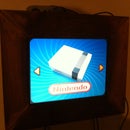Introduction: Self Watering Planter From Cat Litter Container
Hi everyone,
I have a cat, that cat uses litter. I like to buy plastic containers of cat litter because they seemed to have good re-usability. I've been keeping them for some time but never knew what to do with them.
Spring came along and I planted seeds for my usual balcony garden. That's when I realized that those containers would make superb self watering planters. They work wonderfully and didn't cost anything.
Here's how I did it!
Step 1: What You Need
For this Instructables you will need the following:
- Cat litter containers (or any similar container)
- Knife
- Duct tape
- Mesh (optional but recommended)
- Tubing
- A drill, or anything that can make holes in plastic
Step 2: Gutting the Planter
The first step is gutting the container,
Basically I removed the labels from the container and cut it in half.
Make sure that the top half will be able to fit in a reverse position inside of the bottom half.
Step 3: Drill Holes
the basic idea behind a self watering planter is to have a container inside a container that is able to draw water from the bottom and bring it up to the roots. This allows the soil to get as much water as it needs without over watering or under watering.
The most important thing about this concept is that some part of the top container be able to draw water from as deep as possible while leaving enough room to fill the bottom with water.
The cat litter containers are perfect since the spout, once reversed, will be able to draw water from the bottom of the the 2nd container while leaving enough room to fill the rest with water.
What you need to do though is create intake holes that will let the water flow through the spout.
I did this several ways,
First I cut a piece into the handle, this has 2 purposes in itself. First it allows water to go up and then it allows us to put in a tube which will allow us to add water (see next step).
The other way was to drill holes in the lid which can be screwed back on after.
I also placed some mesh at the bottom of the lid to make sure that soil wouldn't fall into the water. This is optional but I think it's worth the 2-3$ you'll spend for mesh.
Step 4: Overflow + Feeder Tube
In the next step I created an overflow in the bottom container,
This allows me to know when there's enough water in the reservoir and also to see the level of water so I know when to refill.
I did this with a drill but you could also do it with a knife obviously.
The next step is cutting a length of tube that will stick out of the top container and go straight into the bottom one. this will allow us to fill the reservoir with water easily. n.b. I bought what I believed to be "large enough" tube but the diameter turned out to be to small for my watering can (I have to use a funnel now). So remember that larger is better :p
so this tube goes into the handle hole we created in step 3 and is held in place with good old duct tape.
Step 5: Final Assembly
This one's a no brainer.
Duct tape the whole thing togheter
Add dirt
Plant whatever you want
Eat the resulting fruits!













